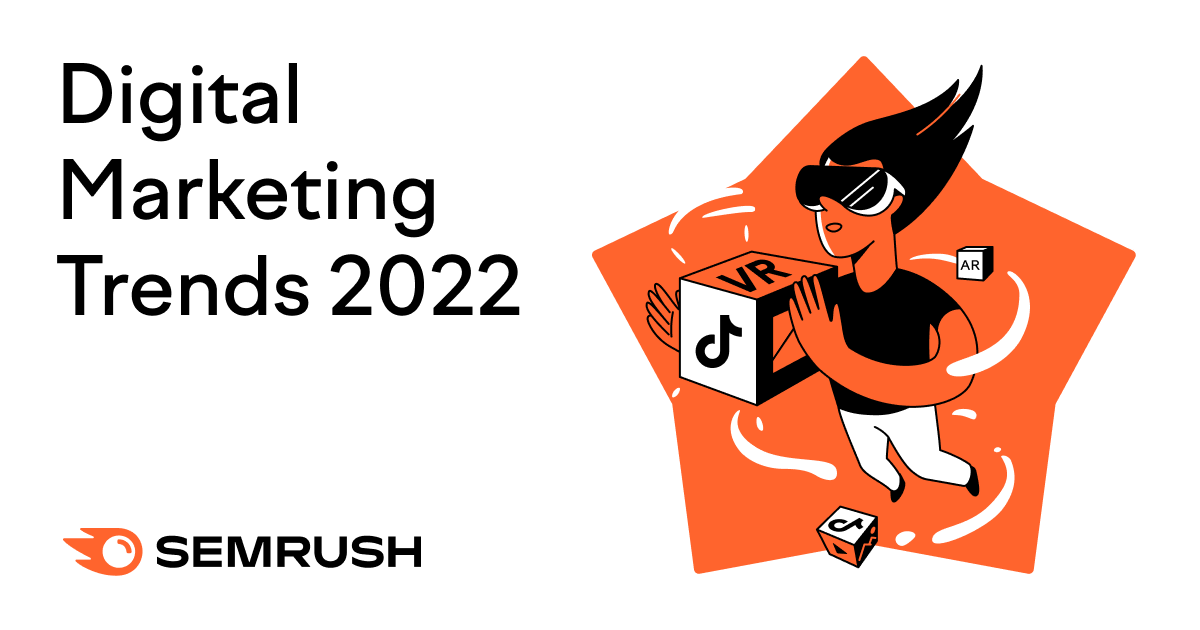There’s a lot happening in the digital marketing world.
With that, here are the eight emerging digital marketing trends you should know for 2024 and beyond.
Trend 1: Marketers Are Embracing AI
Most digital marketers have adapted to and integrated artificial intelligence (AI) into their marketing strategies—at least in some form. Often to save time and resources.
We surveyed over 2,600 businesses for our 2024 AI Content Marketing Report for SMBs. And 67% of them said they use AI for content marketing and SEO.
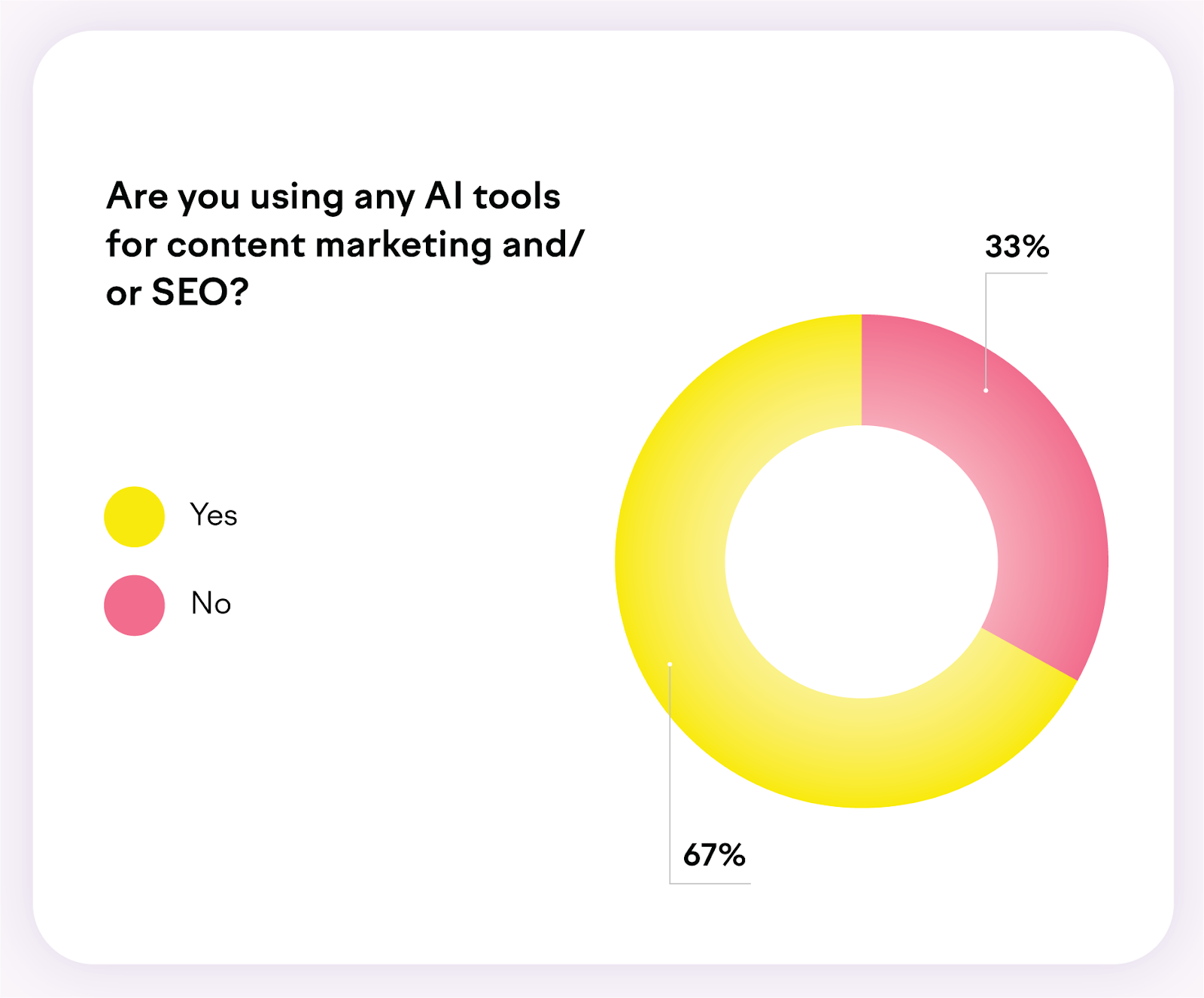
Tools like Semrush’s ContentShake AI can assist you with such tasks. Like writing social media posts, product descriptions, and blog articles.
For example, let’s say you want to create a blog post.
Launch the tool and scroll to “Create an article with our ideas.” Enter your idea into the text box and click “Start writing.”
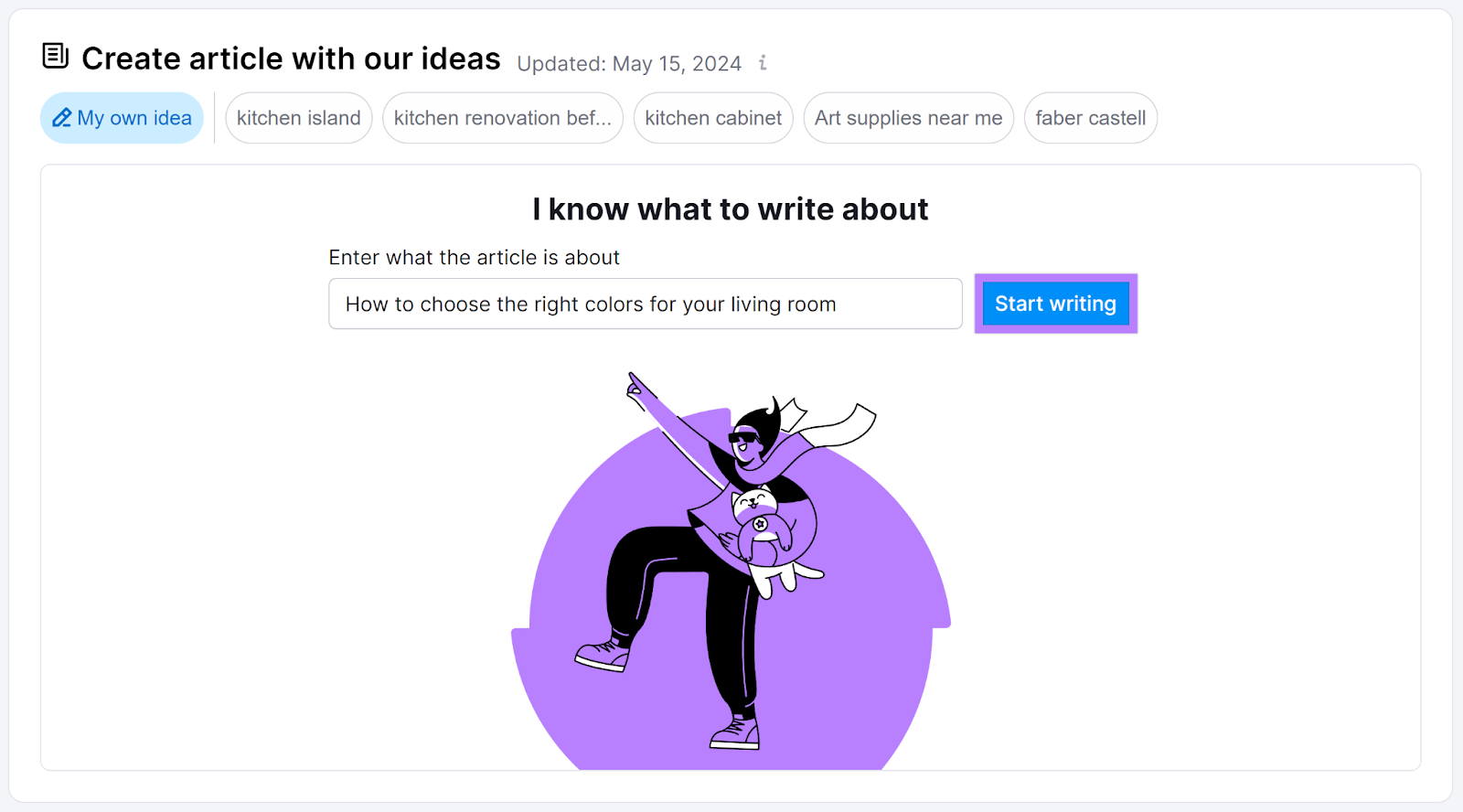
The tool will make suggestions for the title, keywords, word count, tone of voice, and readability level.
Choose from these recommendations or input your own. Once you’re done, optionally click the box next to “Add an extra SEO boost” and click “Create article.”
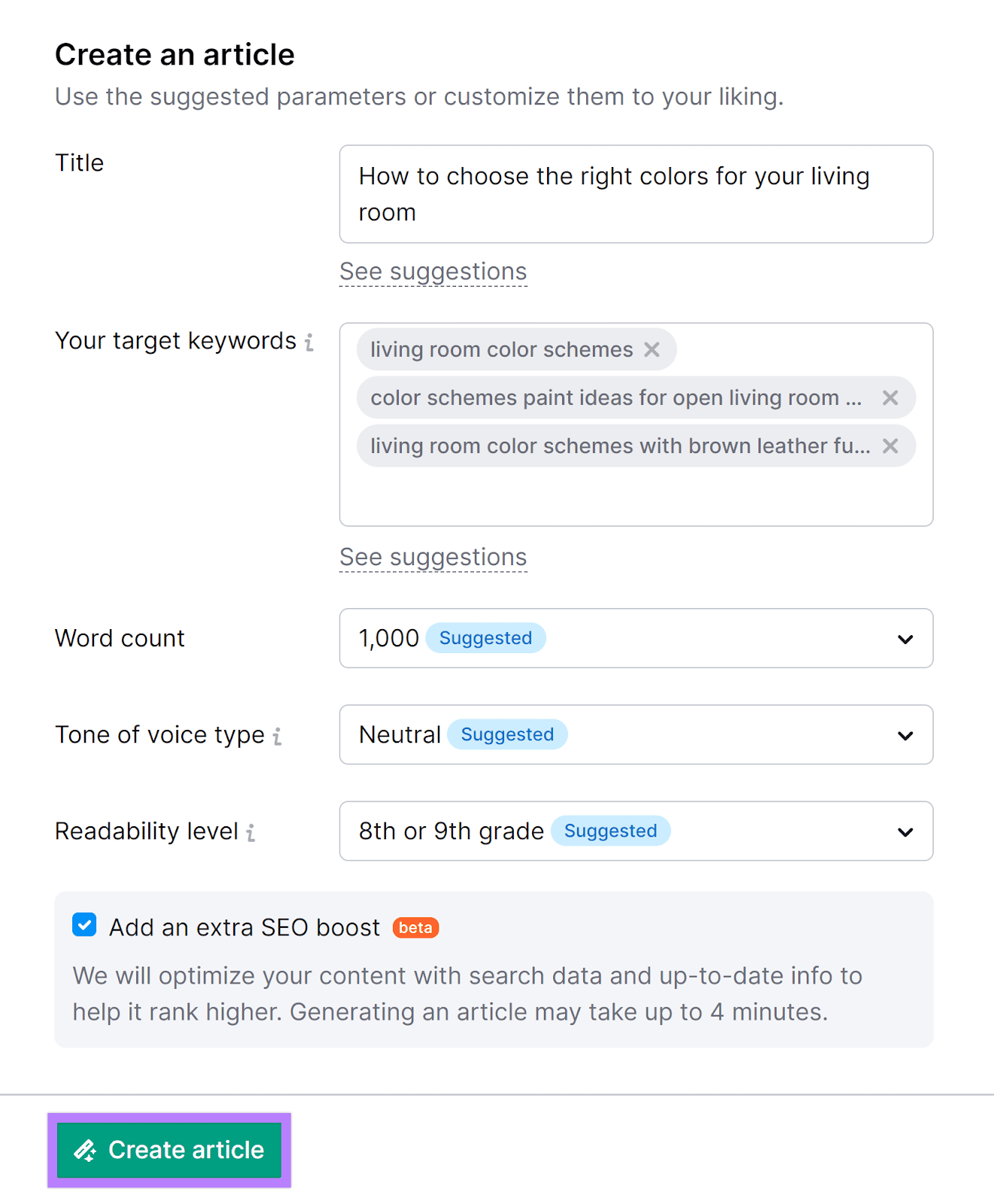
In minutes, the tool will create a comprehensive article—including headings and images.
From there, regenerate it if needed and edit it to make sure it’s polished.
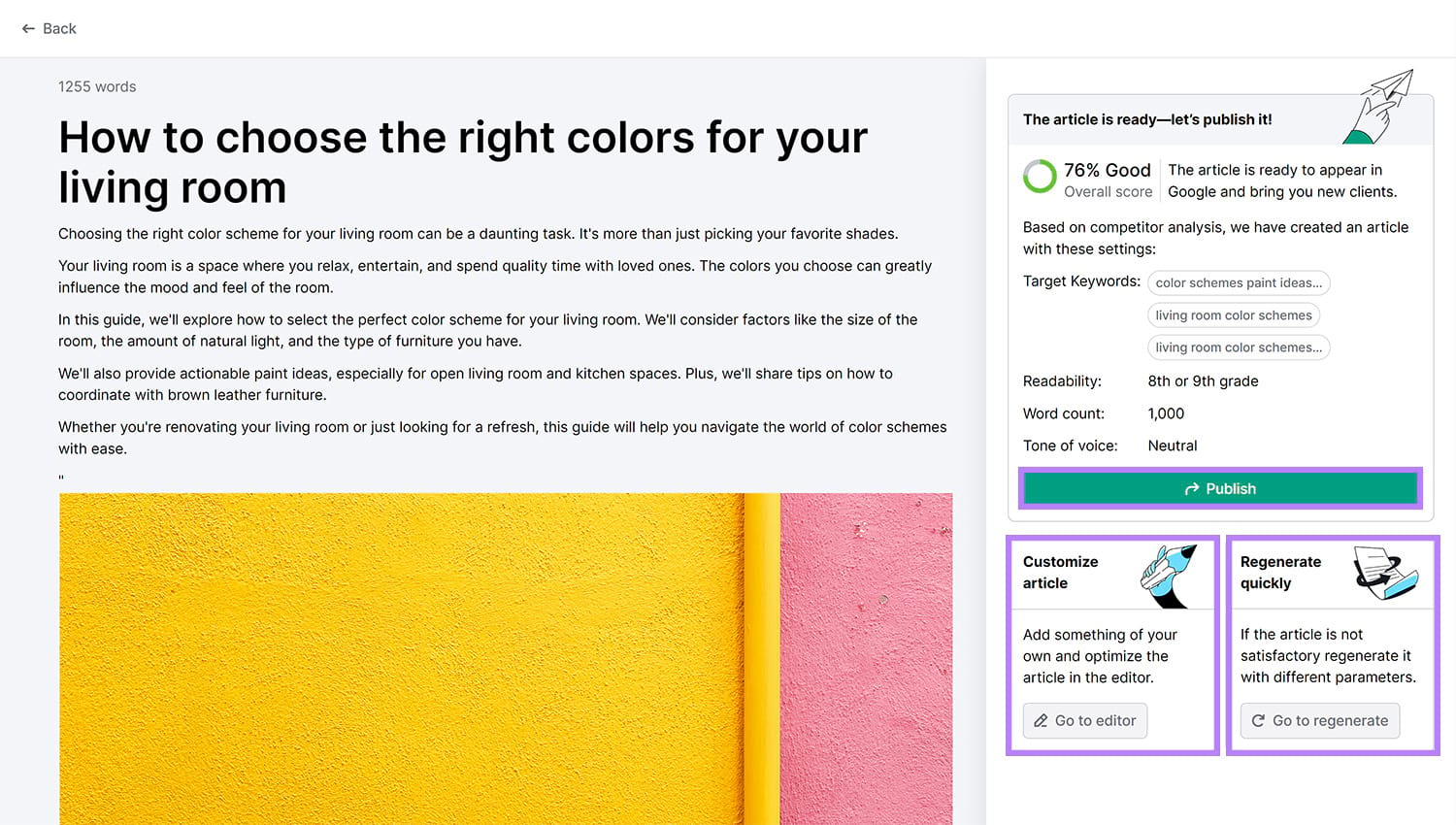
Once you’ve adjusted the article with your own expertise, research, etc., you can publish it directly to your WordPress site.
Now, let’s look into some of the newest AI trends in digital marketing.
Text-to-Video Content Creation
Generating videos from text instructions is the most anticipated breakthrough in generative AI. Because it could drastically reduce production time and cost.
OpenAI’s text-to-video model Sora has shown some promising teasers. Like this wooly mammoth clip that was created with a detailed text prompt.
At the moment, OpenAI has made Sora available to select visual artists and filmmakers.
It’ll be exciting to see how businesses and marketers will use this tool. But it looks quite handy for short-form video content.
As per our AI Content Marketing Report, 52% of businesses are looking to try AI video generators. To level up their marketing efforts.
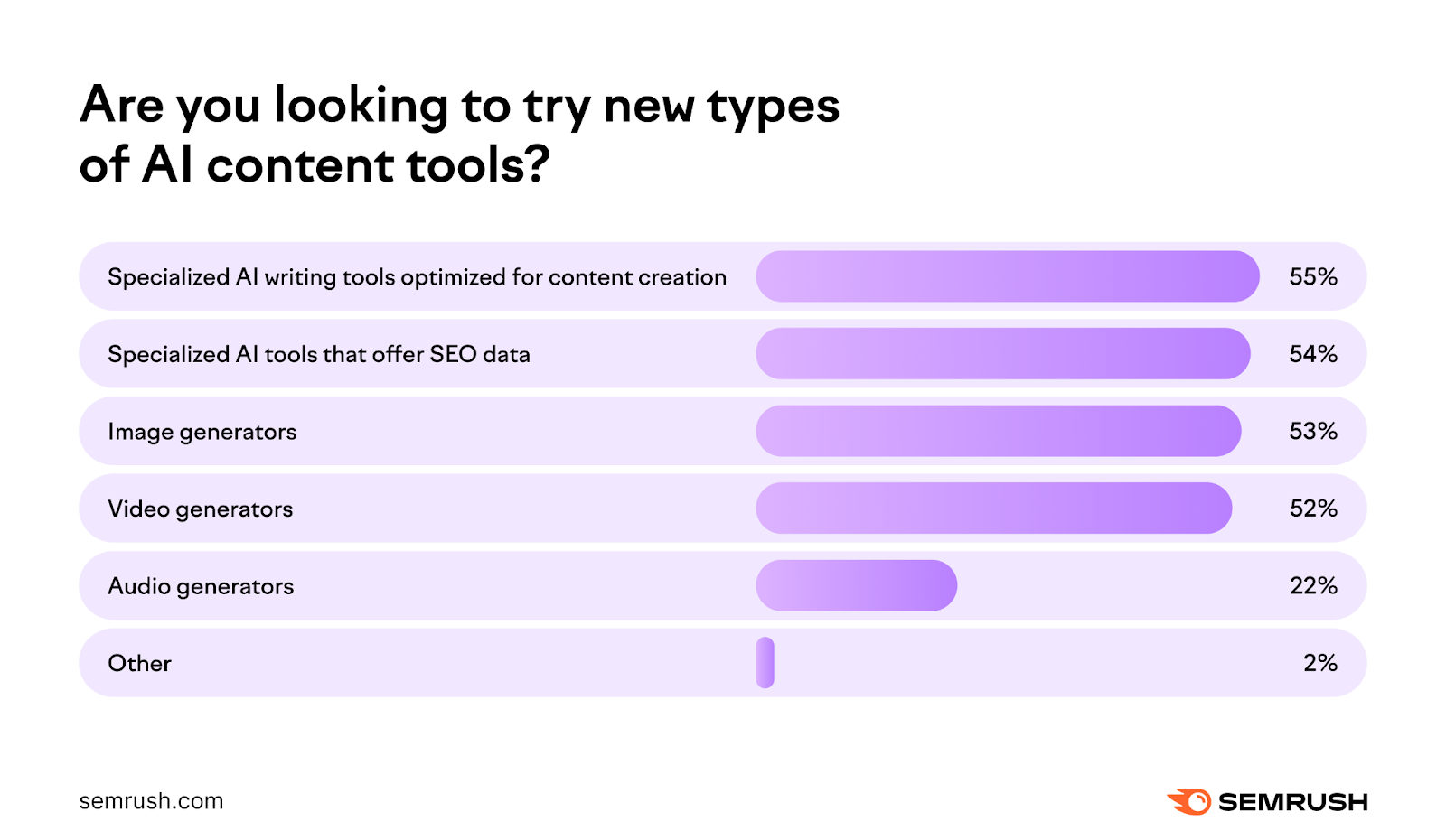
Personalization at Scale
AI can help with personalization by predicting your customers’ behavior based on their demographics, browsing history, or purchases. And, it allows you to tailor your messages and offers to meet their needs.
For example, the personal styling brand Stitch Fix has nailed personalization on a massive scale by combining AI and human touch.
Customers take a style quiz and share their preferences, goals, budget, etc.
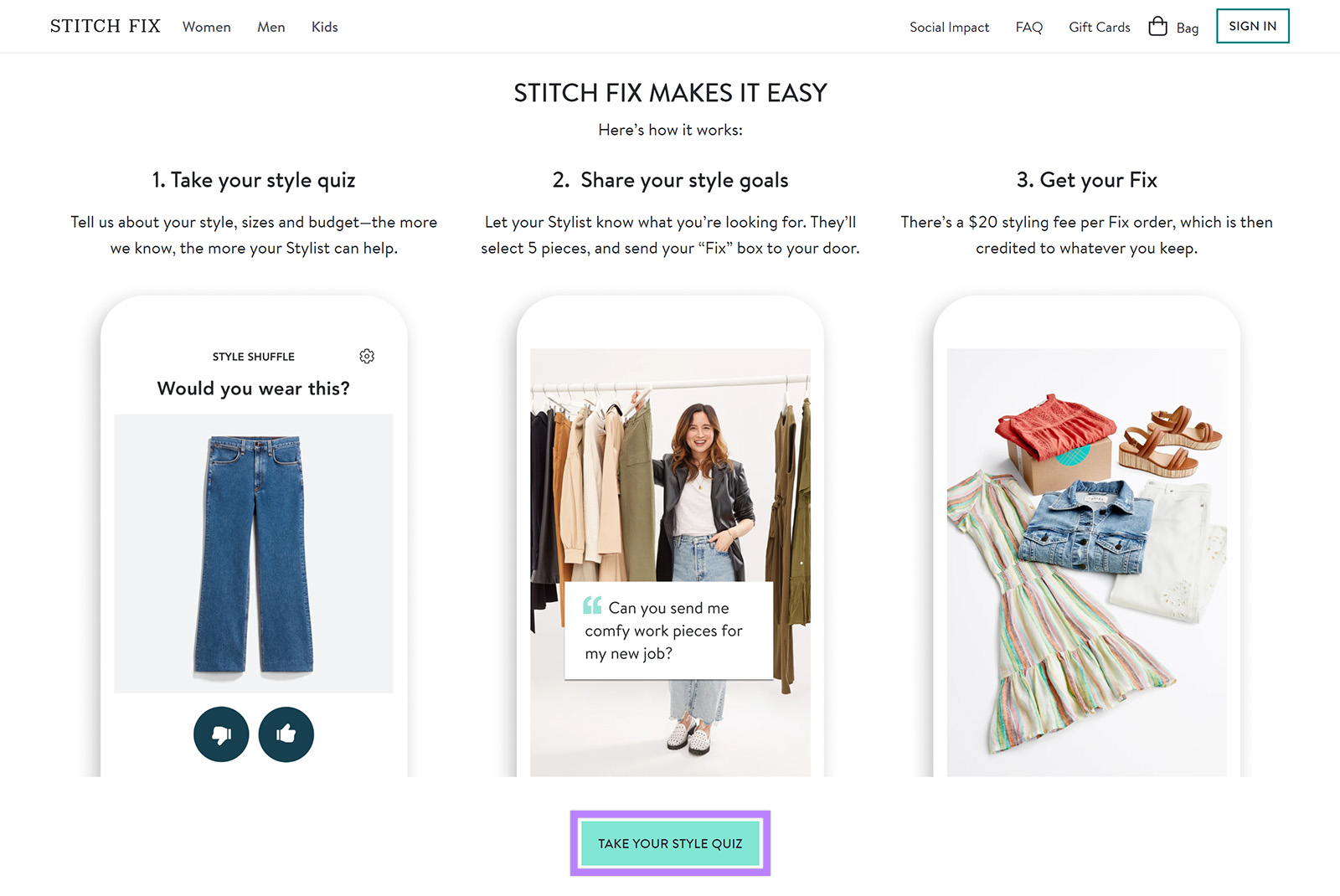
Stitch Fix then uses generative AI to process over 4.5 billion data points shared by its clients.
Human styling experts analyze these AI insights. And prepare personalized apparel boxes for its millions of clients. Based on their individual preferences, sizes, and styles.
And AI can also personalize email marketing campaigns by:
- Analyzing customer data like location, time zone, and engagement patterns to optimize send times
- Generating personalized subject lines and content that resonate with recipients
Further reading: Best AI Tools for Digital Marketers in 2024
Trend 2: Brands Are Adopting Expert-Led Content
Expert-led content is content created by (or with the help of) industry experts. To boost the content’s authority and credibility.
How does it do that?
Expert-led content often provides deeper insights and nuanced viewpoints than generic blog posts or surface-level articles.
It addresses complex pain points that resonate with your target audiences. And helps you position your brand as a go-to source for reliable information.
And because many brands have tried to use AI to rapidly scale content production without human intervention, there’s been an influx of low-quality content. So, users are craving original and valuable information.
That’s why content created with Google’s Experience, Expertise, Authoritativeness, and Trustworthiness (E-E-A-T) guidelines is so important. And more likely to rank in search results.
An example of this type of expert-led content is Semrush’s 2024 AI Content Marketing Report for SMBs.
We collaborated with industry leaders to put together this research on the use of AI in content marketing.
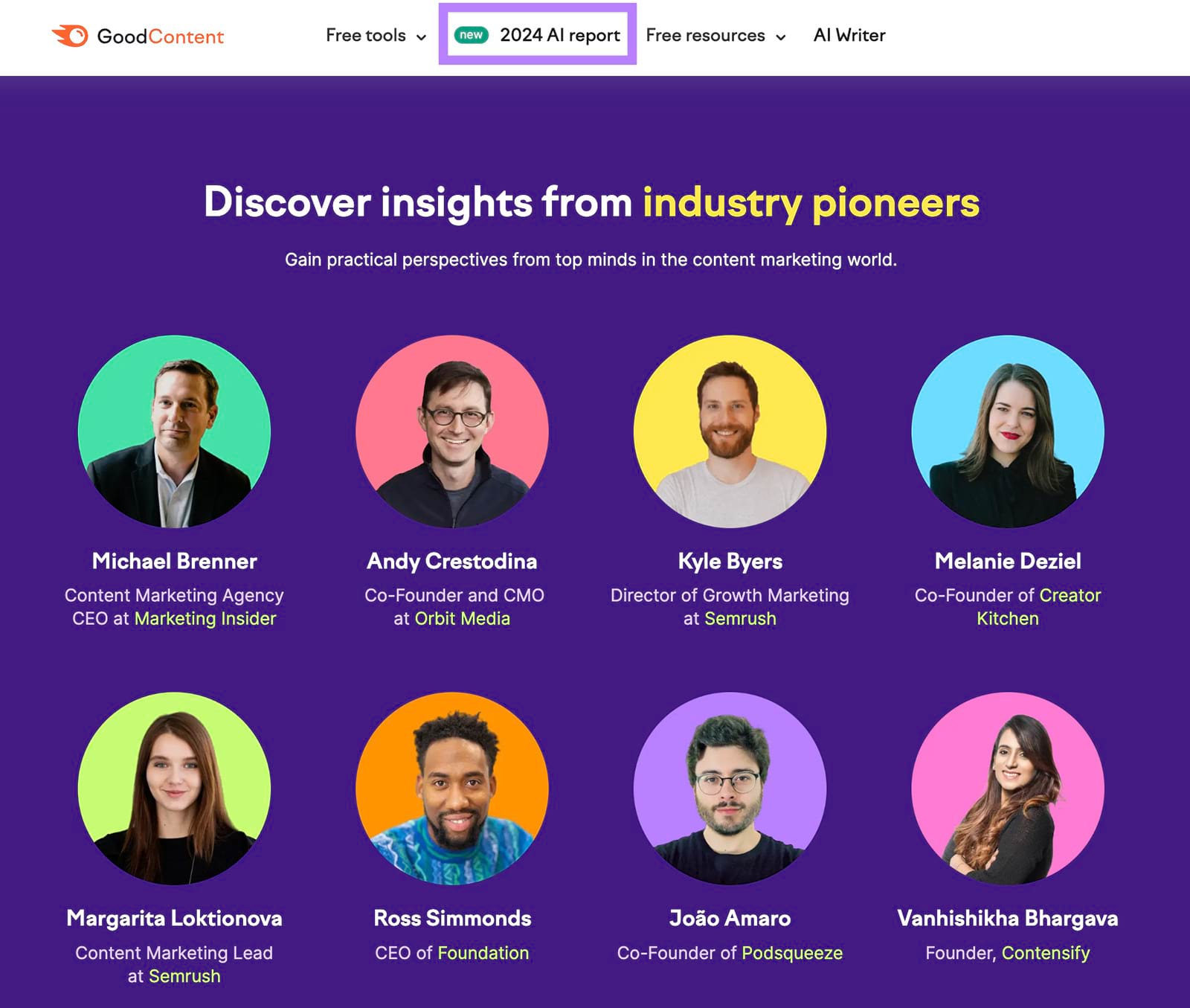
Here are some tips for creating and distributing expert-led content:
- Identify experts with strong authority and alignment with your brand’s values
- Focus on providing in-depth knowledge and unique data, research, or other insights to your audience
- Choose formats that resonate with your audience
- Promote content in collaboration with experts across various channels. To maximize its reach.
- Optimize your content for search engines. And repurpose it for different channels (e.g., social media, YouTube).
Further reading: What Is Quality Content & How to Create It
Trend 3: Short-Form Videos Have Become Dominant
Short-form videos that quickly deliver value and/or entertainment are continuing to grow in popularity.
In fact, our State of Content Marketing 2023 Global Report reveals that the short video format is the top-performing video type among marketers and business owners.
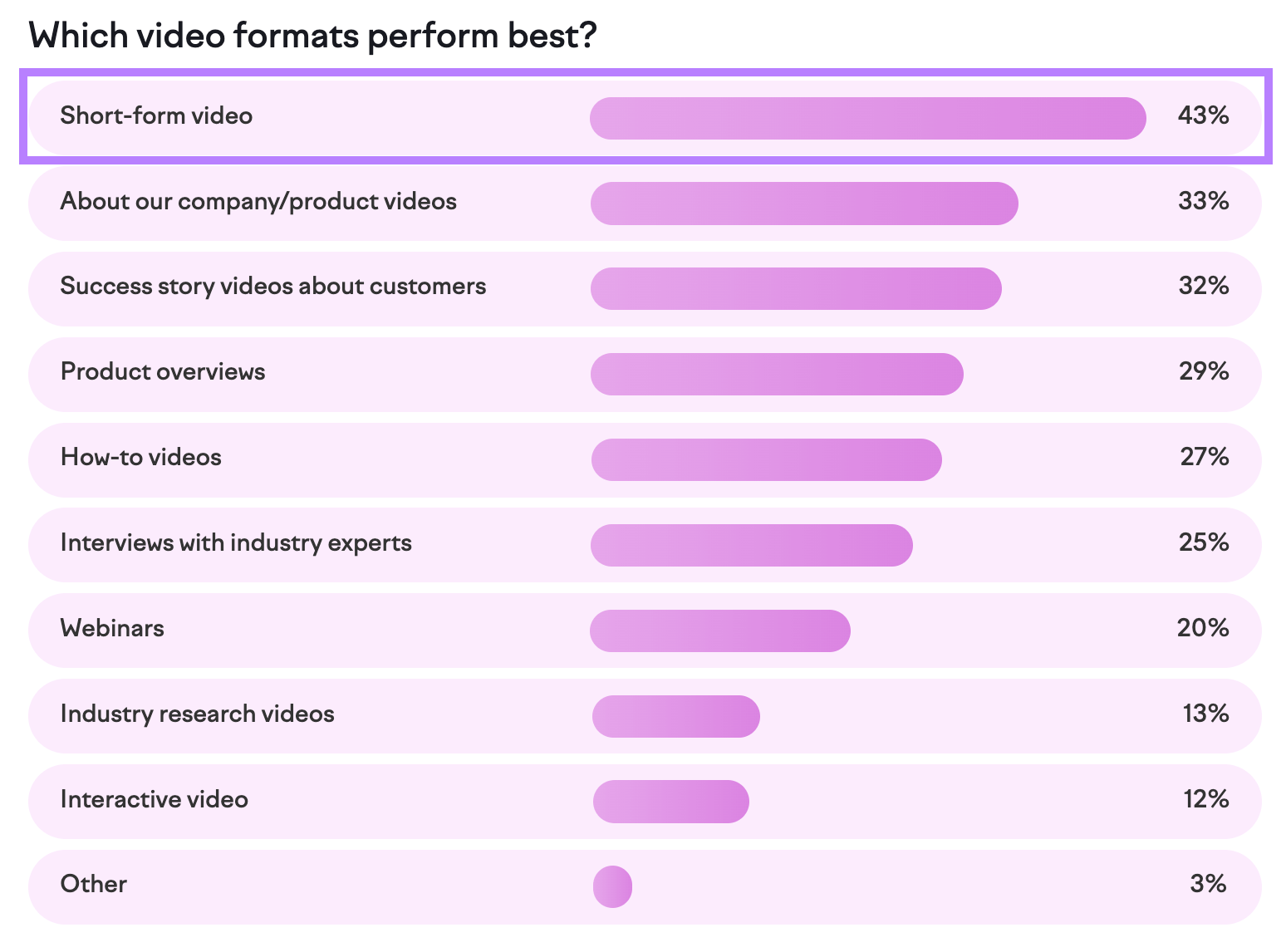
These videos typically range from a few seconds to a few minutes, depending on the platform.
And they’re ideal for social media platforms. Like TikTok, Instagram, LinkedIn, and YouTube.
Follow these best practices to maximize the impact of your short-form videos:
- Customize your videos for each platform. What works on TikTok might not work on Instagram Reels or YouTube Shorts. So, study each platform’s trends and nuances to create videos accordingly.
- Start with a strong hook. Grab attention quickly with interesting visuals, on-screen text, or a compelling question.
- Focus on a clear message. Despite the short time frame, try to convey one key message or takeaway per video.
- Stick to your brand’s style and values. Use logos, colors, and messages that align with your brand identity. This helps make your content instantly recognizable to your audience.
- Repurpose existing videos. Edit longer videos into attention-grabbing clips. Or, transform webinar highlights into short snippets.
- Participate in trends. Occasionally participating in trends—like challenges— can boost discoverability and engagement. But ensure it’s relevant to your audience.
Further reading: Video Marketing: The Ultimate Guide for 2024
Trend 4: More Teams Are Using Programmatic SEO
Programmatic SEO refers to automating parts of SEO to create and optimize webpages at scale. Something many brands have started doing to save time without sacrificing results.
It’s a useful technique if you’re running a large website with thousands of pages (e.g., an ecommerce site with huge product catalogs). Or, a dynamic website with frequently changing content (e.g., travel and accommodation booking sites with a large number of location pages).
The key benefit of programmatic SEO is you can easily create several pages optimized for an entire category of target keywords with a page template.
But it requires coding skills and careful execution.
Why?
Because there’s a chance you might end up generating a large number of low-quality or duplicate pages if things go wrong.
Here’s an example of successful programmatic SEO implementation:
Tripadvisor ranks highly for multiple queries in the keyword category “best hotels in [city name].”
Check out these Google search results for “best hotels in san francisco.”
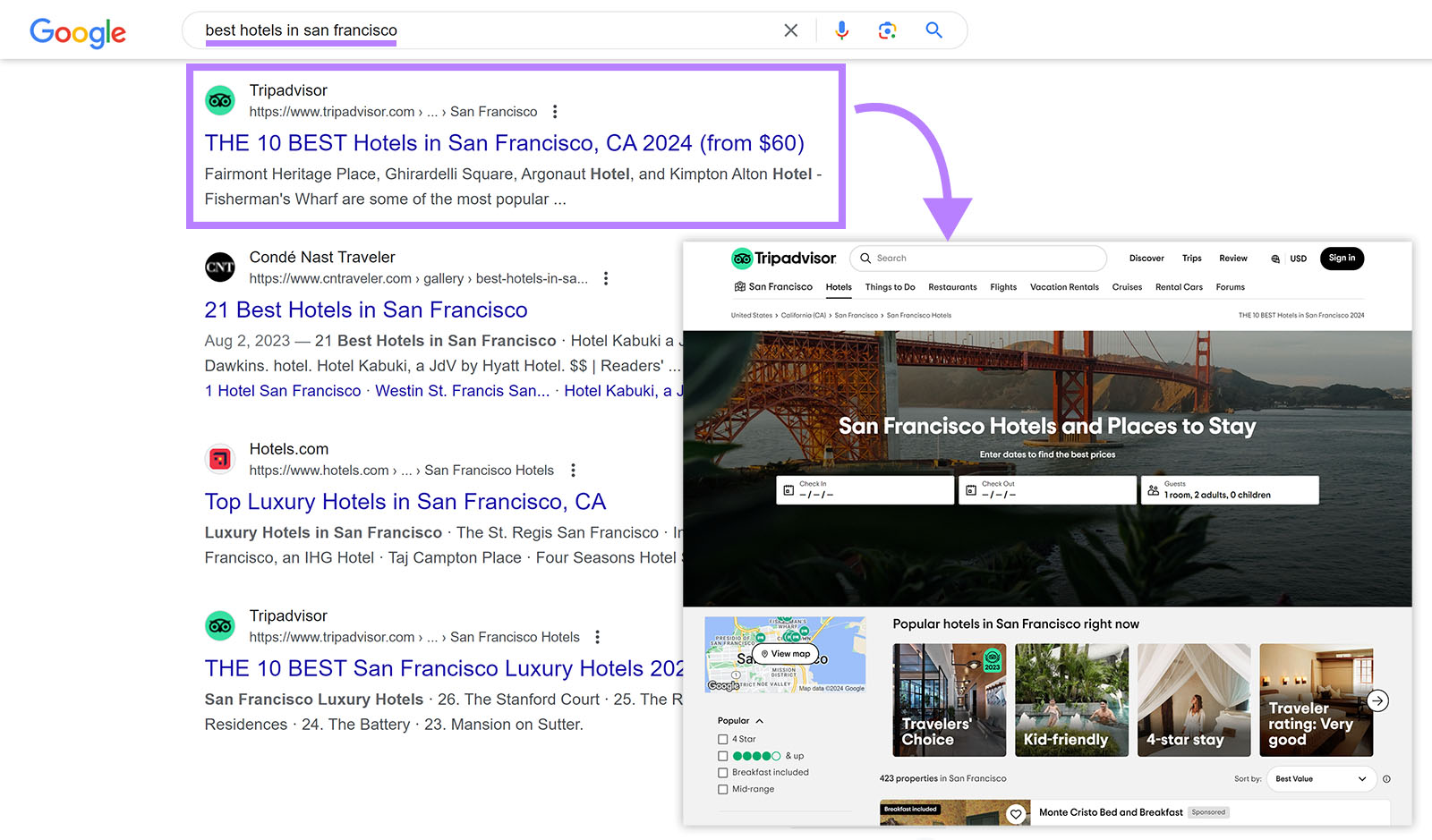
And “best hotels in new york city.”
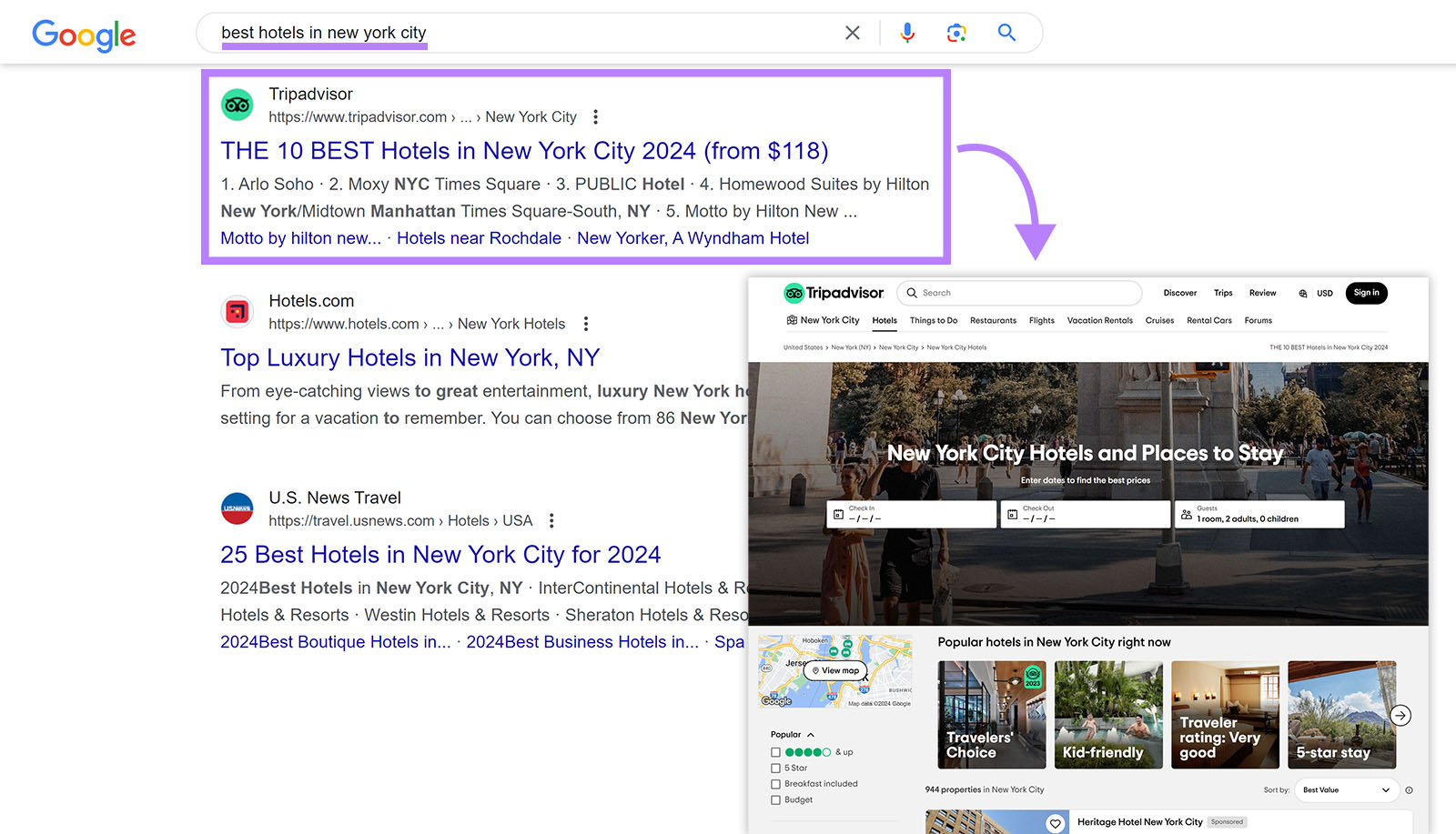
Similarly, Tripadvisor ranks for phrases like:
- “best hotels in las vegas”
- “best hotels in miami”
- “best hotels in london”
Likewise, Hotels.com and Conde Nast Traveler’s programmatic pages also rank in the top three results. For the same keywords mentioned in the above example.
Trend 5: B2B Influencer Marketing Is Growing
Influencer marketing has been popular in the B2C sector for a while to promote products, services, or brands by collaborating with relevant influencers. But now, it’s also getting traction in the B2B landscape.
This is because B2B influencers are often subject matter experts or industry thought leaders. Who have a large number of industry professionals following them for reliable information and advice in their field.
For example, Jason Lemkin runs SaaStr—a leading community for business software. Many SaaS professionals (including CEOs) follow him and attend community events.
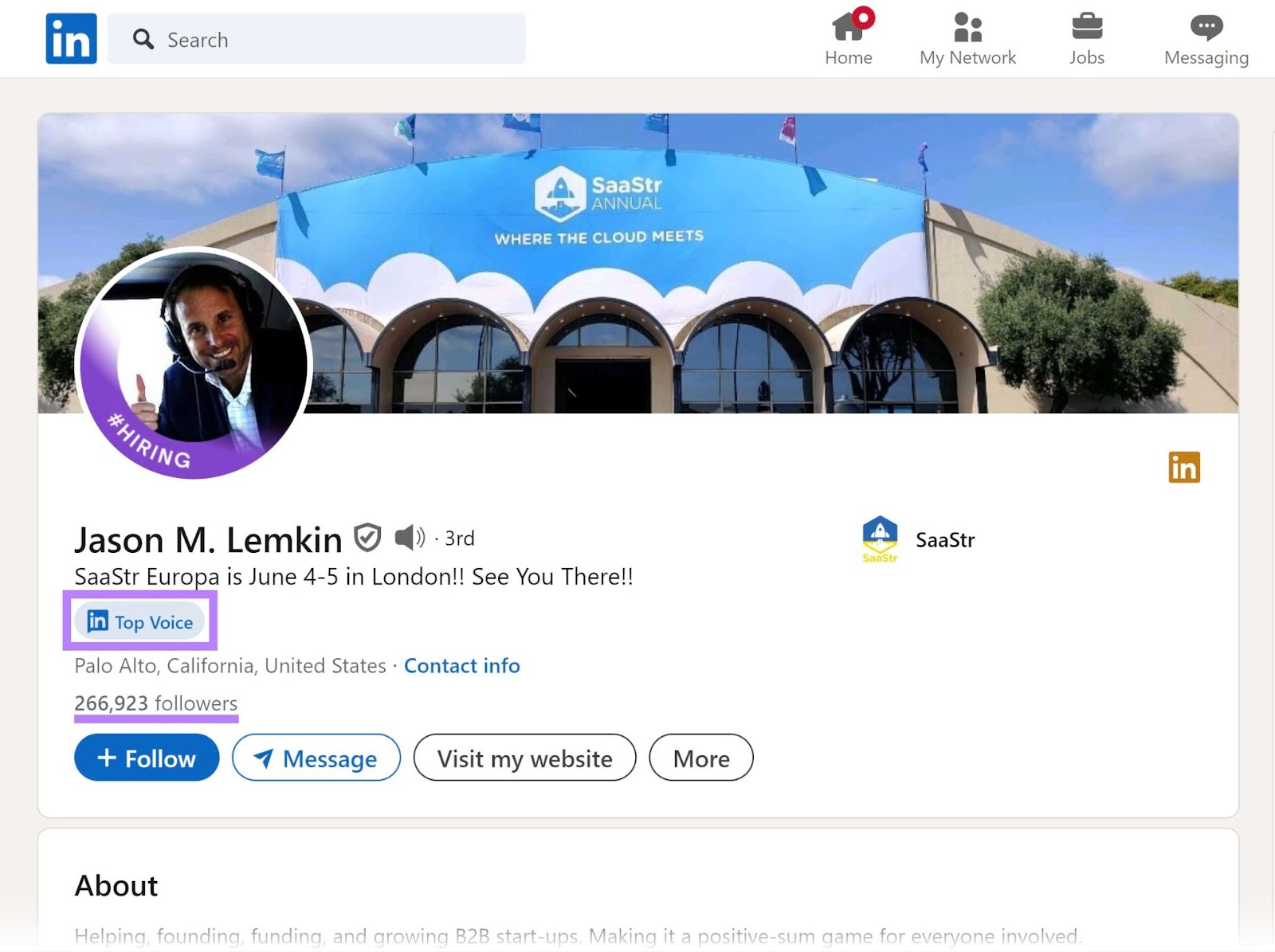
So, if you’re running a SaaS business, you might consider partnering with an industry leader like Jason. It helps you leverage their authority and influence to promote your brand.
Just know that B2B and B2C influencer marketing are considerably different.
B2B influencer marketing often focuses more on building long-term relationships and establishing credibility. While B2C influencer marketing is usually more for short-term engagement or sales.
Another difference is B2C influencers mostly promote products through lifestyle content on mainstream social platforms like Instagram, TikTok, and Facebook. But B2B influencers are more likely to engage in in-depth discussions, webinars, and case studies that reflect their expertise and authority.
Partnering with the right thought leader is the key to running an effective B2B influencer marketing campaign.
You can do this easily through the Influencer Analytics app.
Here’s how:
Let’s say you want to partner with a YouTube influencer.
Open the tool and click “Influencer Discovery” in the navigation menu.
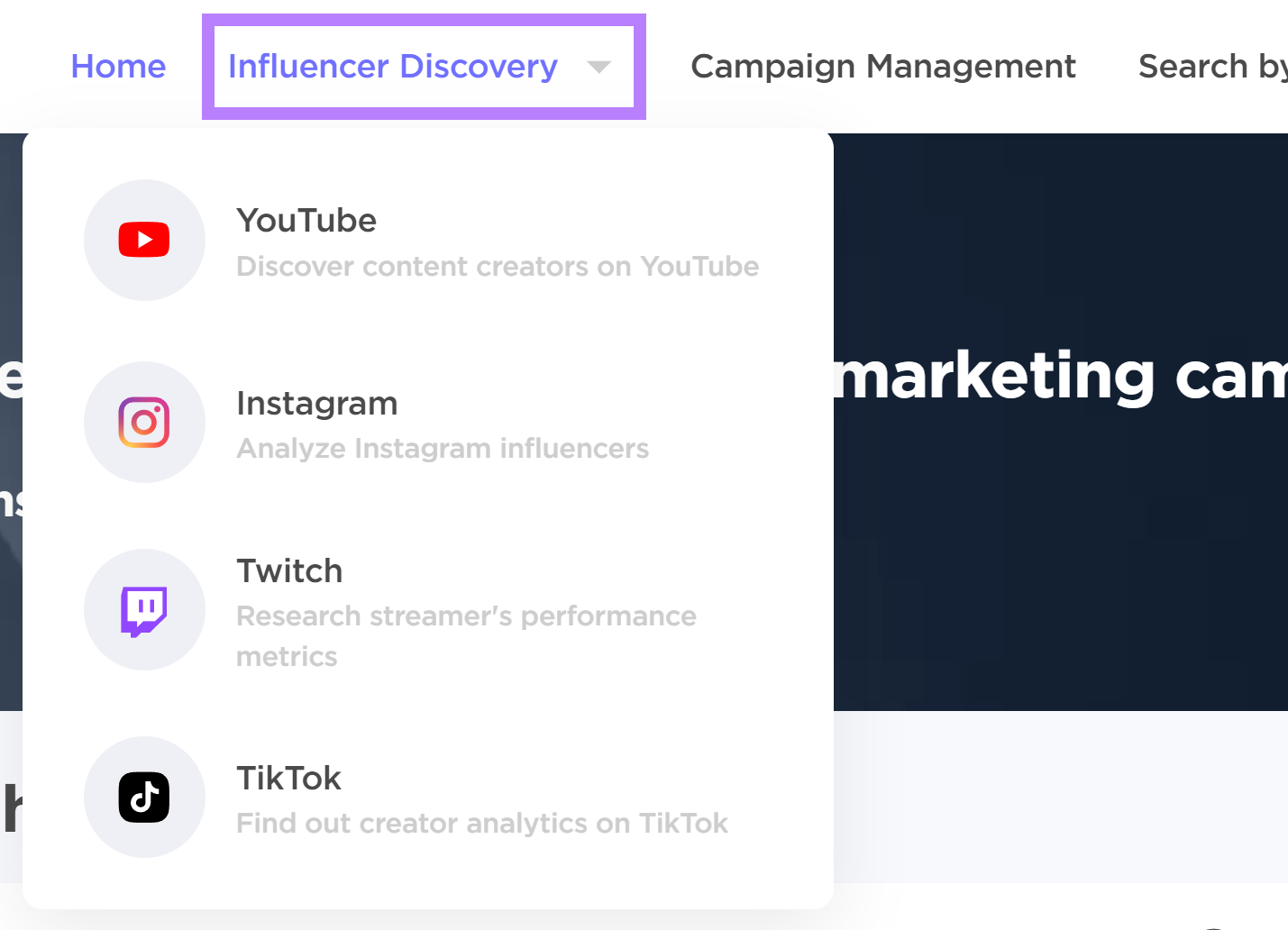
Next, select “YouTube” from the drop-down menu.
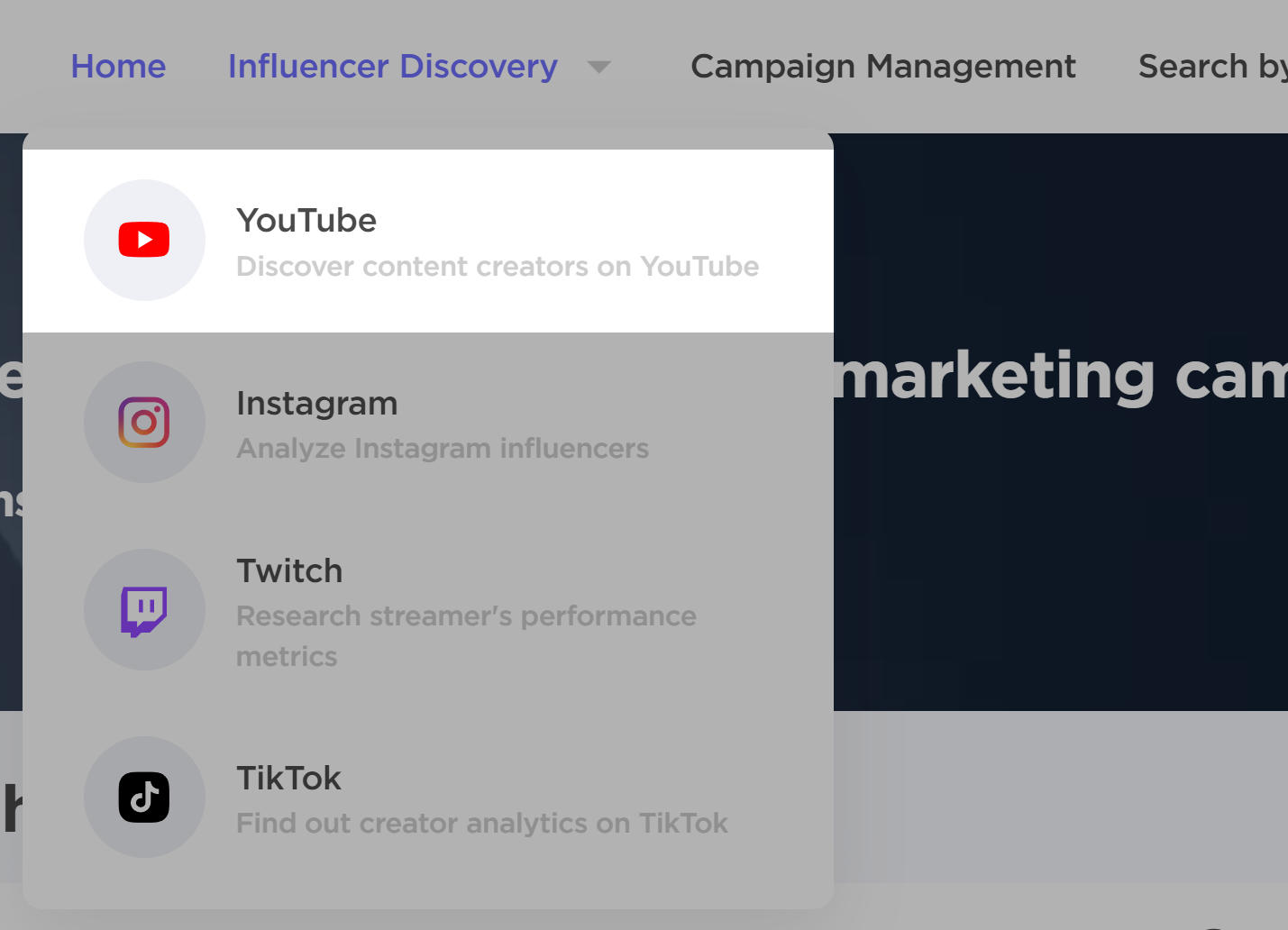
You can explore influencers here if you’re just starting out.
But if you have someone in mind, enter the channel name in the search bar. And click the channel as shown below.
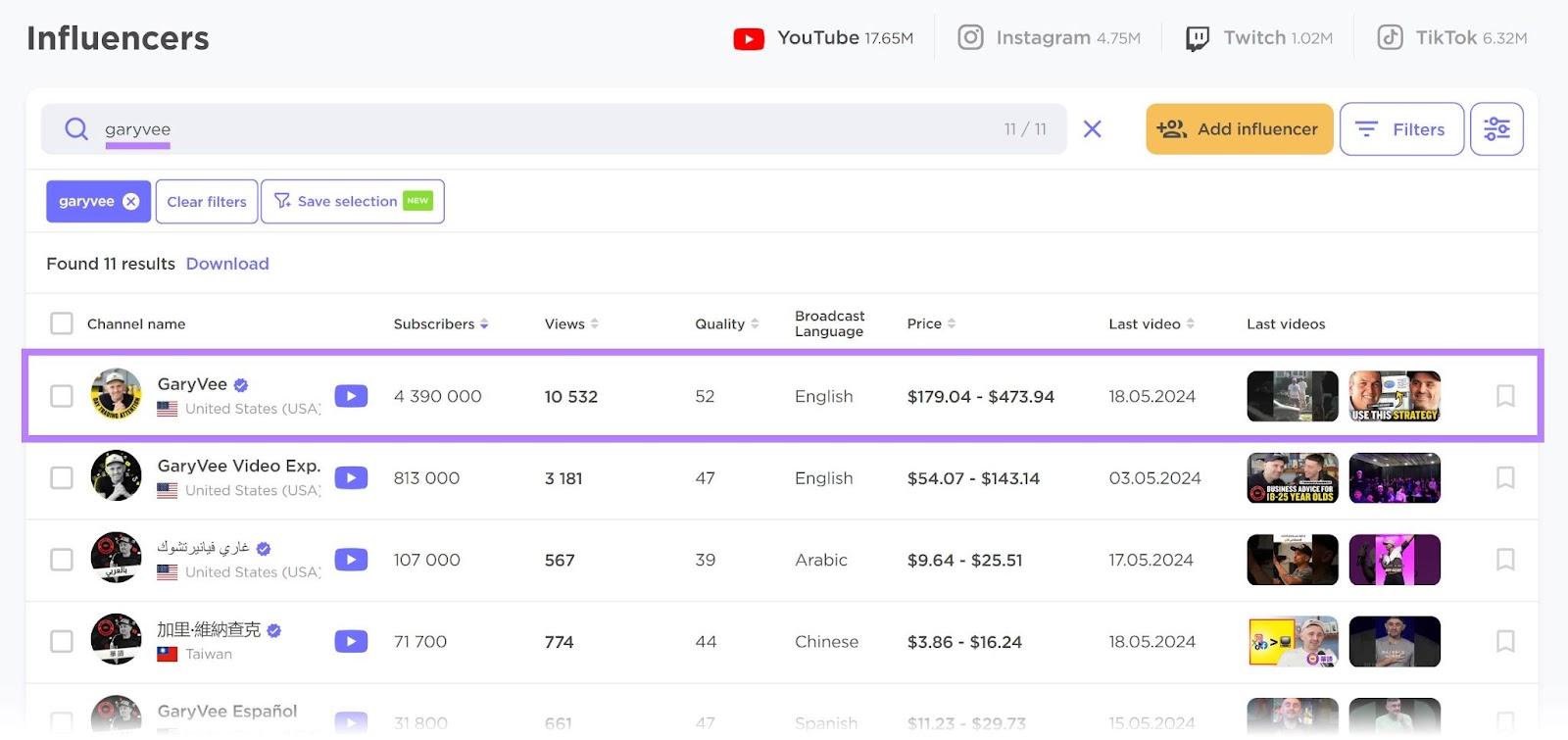
You’ll see an overview of the channel’s performance at the top. With metrics like “Number of subscribers,” “Average views,” “Integration costs,” and more.
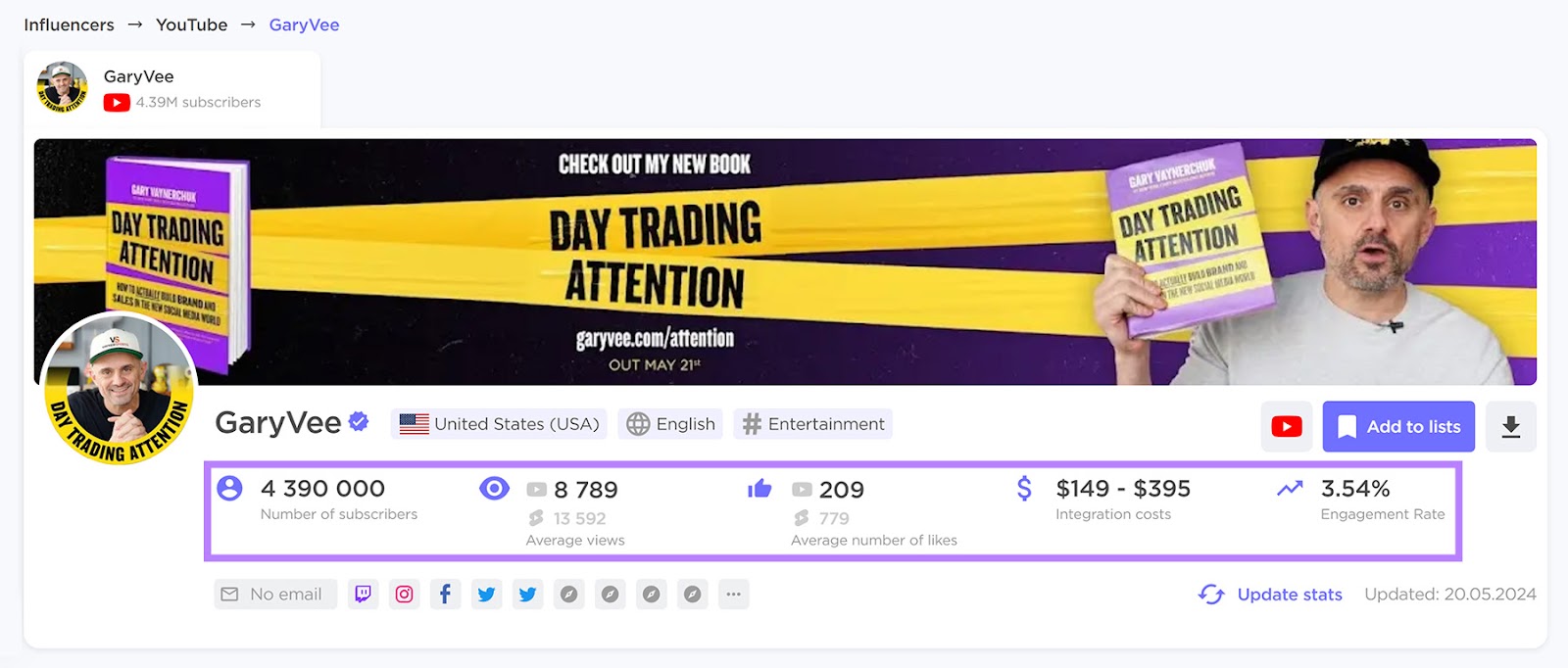
Scroll down to see detailed insights on each metric.
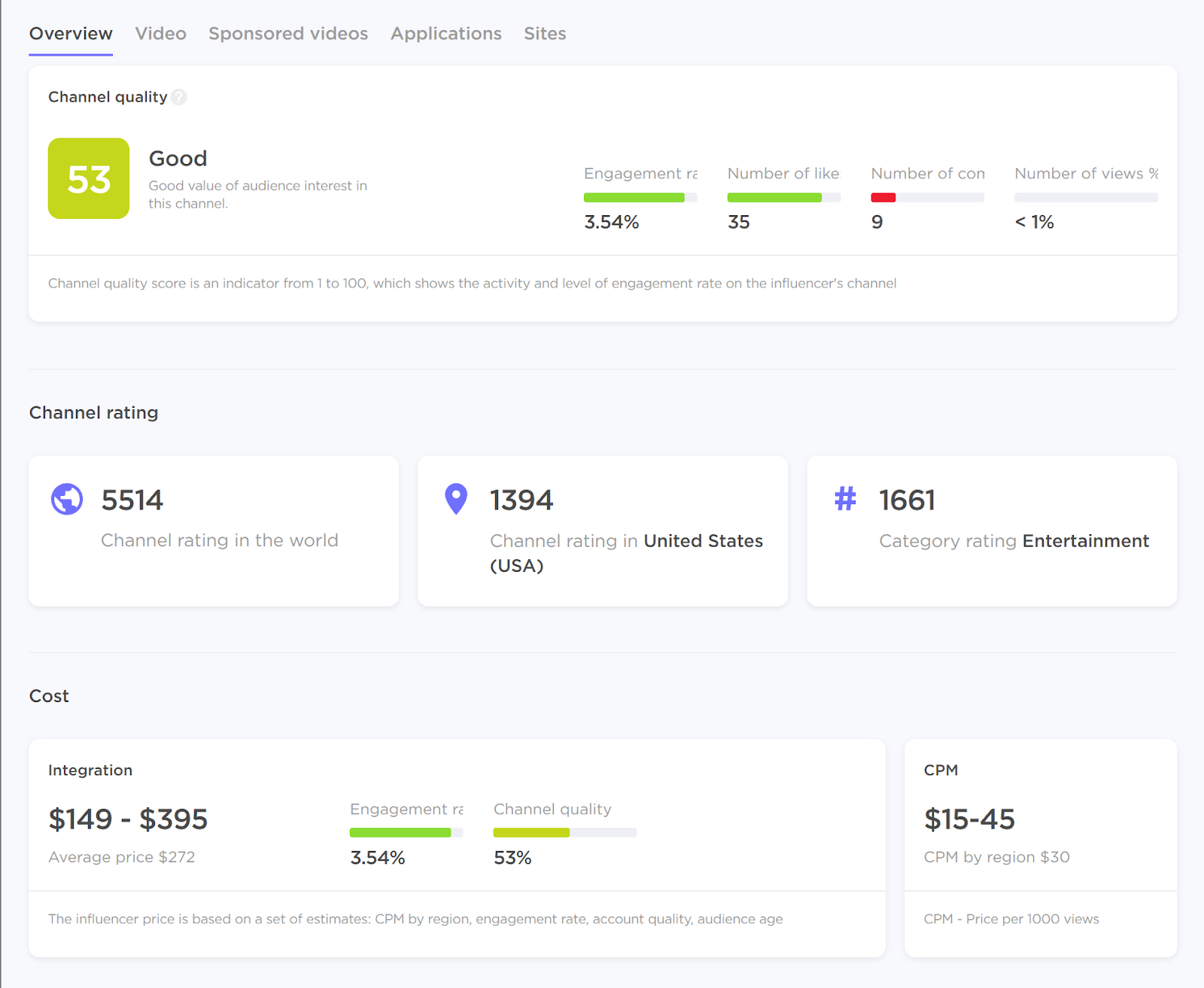
Repeat this for any other influencers you’re planning to collaborate with. Then, reach out to those influencers with your proposals.
Trend 6: Brands Are Engaging Audiences with Native Advertising
Native advertising involves running paid ads that match the style and format of the surrounding content. And companies have started to lean on it more given these ads often perform better.
Why do they perform better?
Because native advertising is subtle. It helps you promote your product, service, brand, or content without disturbing the user experience.
It often feels like you’re seeing organic content. You only realize it’s an ad when you see a “sponsored” or “recommended” label around it.
For example, check out the content recommendations on Newsweek’s website.
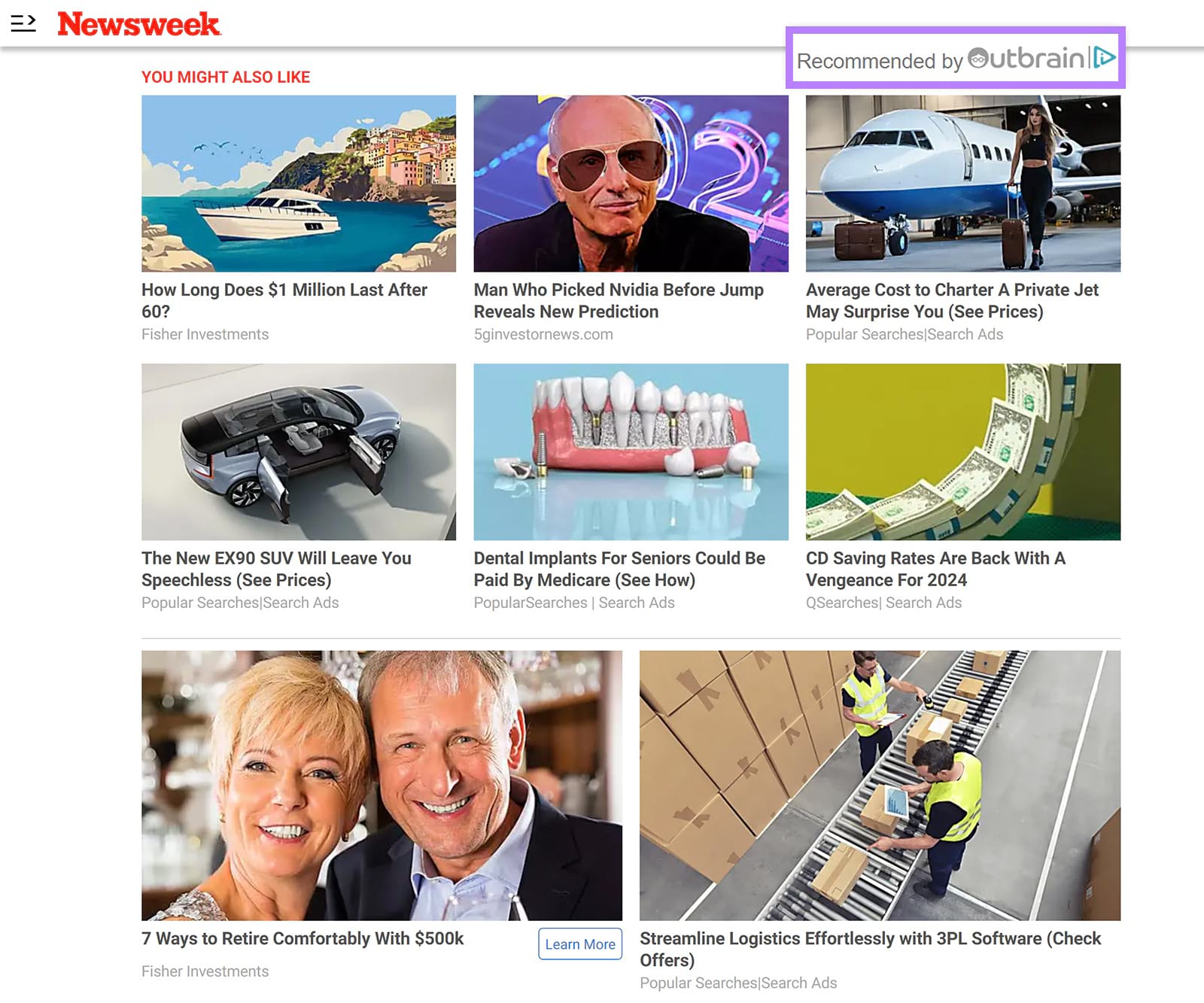
They perfectly mimic the appearance of the platform. And surrounding content.
Here’s another example:
Cube Asia (an ecommerce market intelligence company) promotes its research article on influencer marketing through an in-feed native ad on LinkedIn.
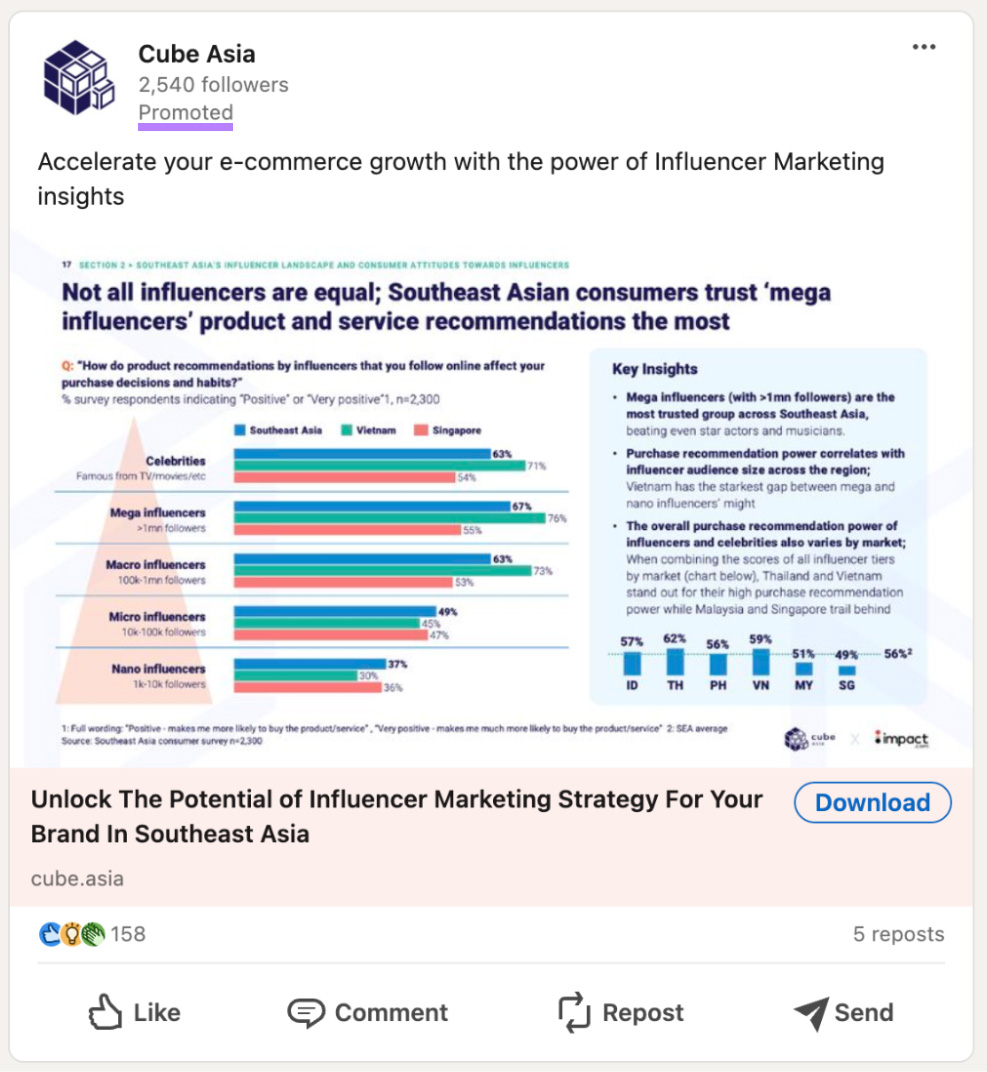
Native ads also tend to promote relevant and interesting content instead of pushing products or services. So, they often lead to higher engagement rates.
Follow these best practices for effective native ad campaigns:
- Write a compelling headline. But avoid clickbait.
- Write ad copy that feels like you’re talking to your audience. Keep a friendly and conversational tone.
- Test different native ad formats. Like in-feed ads, content recommendation ads, and search ads. And scale those that drive good results.
Trend 7: Marketers Are Preparing for Third-Party Cookies’ Farewell
Google started gradually phasing out of third-party cookies in 2024 and will complete the transition in 2025. Meaning marketers won’t be able to rely on the same method of tracking users for paid ad targeting.
The main reason behind this move is users’ concerns over data privacy and protection.
Here’s a snippet from the Google blog announcing this initiative:
Users are demanding greater privacy–including transparency, choice, and control over how their data is used–and it’s clear the web ecosystem needs to evolve to meet these increasing demands.
Currently, you can track user behavior across sites using third-party cookies. Which allows you to segment your audience and deliver targeted ads.
But once third-party cookies phase out, you’ll need to find alternate ways to gather user data.
Here are some tips to help you adapt:
- Prioritize first-party data: Continue using first-party cookies—user behavior data stored on your site. And invest in other first-party data collection strategies. Such as through engaging content, free tools, loyalty programs, and newsletter subscriptions.
- Use contextual advertising: Place your ads on sites that are relevant to the content of the page you’re advertising
- Build trust: Be transparent with users about data collection. And offer tangible value (freebies or rewards) in exchange for information.
For example, let’s say you’re an online direct-to-consumer brand.
Build an email list by offering exclusive discounts and early access to sales for subscribers. Then, use this customer data to personalize email campaigns and website recommendations.
Marketers who view social media platforms as search engines are finding new ways to connect with audiences. Especially Gen Z audiences.
In a recent survey, over half of Gen Z respondents say they use social media to search for information. Compared to 45% who use traditional search engines.
They turn to platforms like YouTube, TikTok, and Instagram for:
- Product reviews and recommendations
- Tutorial videos
- Trending topics and news
- Inspiration for fashion, travel, home decor, etc.
For example, instead of searching “how to restore whatsapp chat” on Google, they’d look for it on YouTube.
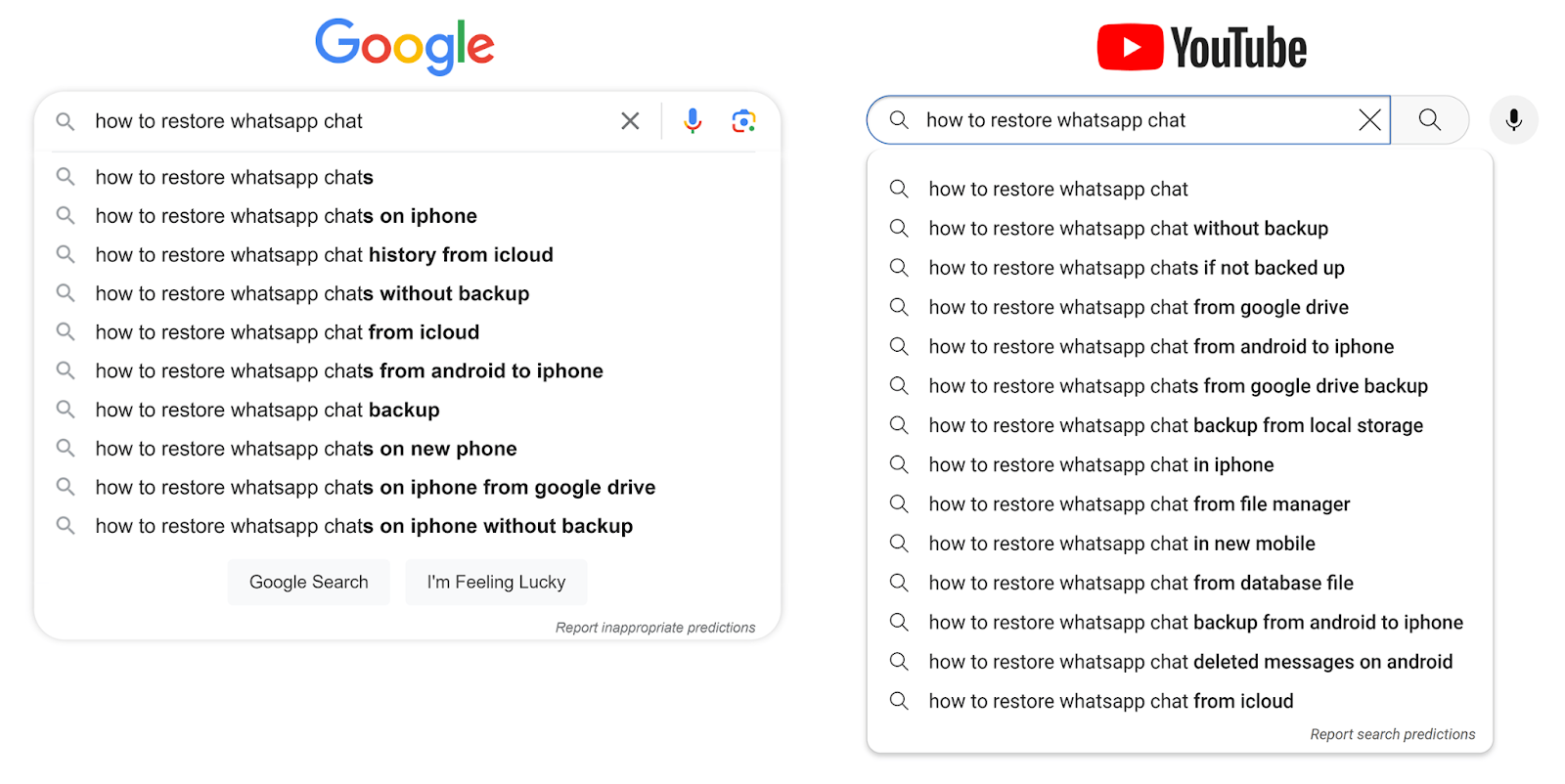
To capitalize on this trend, ensure you have a strong social media marketing strategy. So, your social accounts (or content) appear on top when your audience searches for information related to your business.
Start by researching the social platforms your target audience frequents.
Use the Market Explorer tool to quickly get this data.
Open the tool and go to “Analyze Category.” Select your “Location” and “Business Category.”
And click the “Research a market” button.
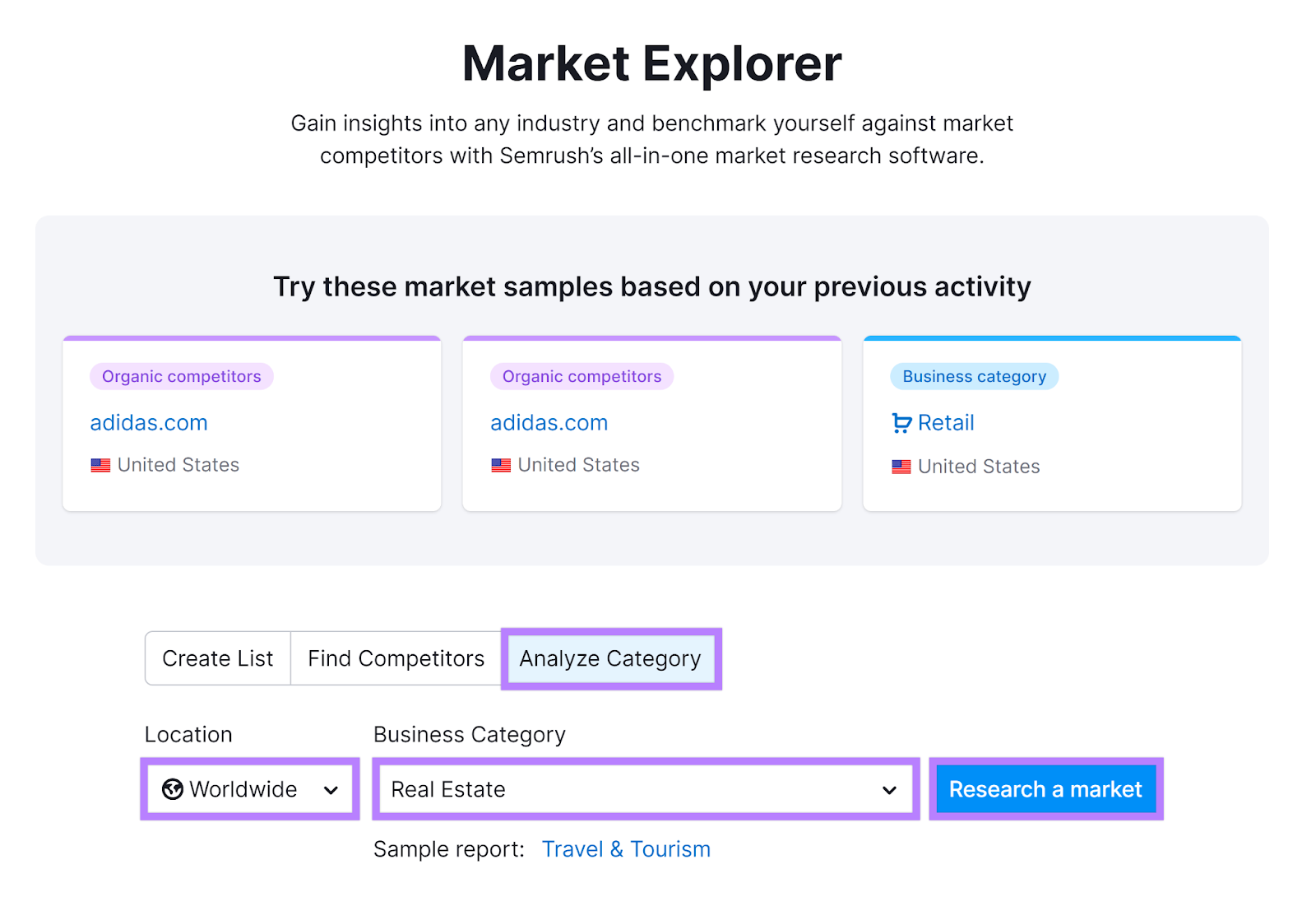
You’ll see an overview of your industry for your chosen location.
Click the “Audience” tab.
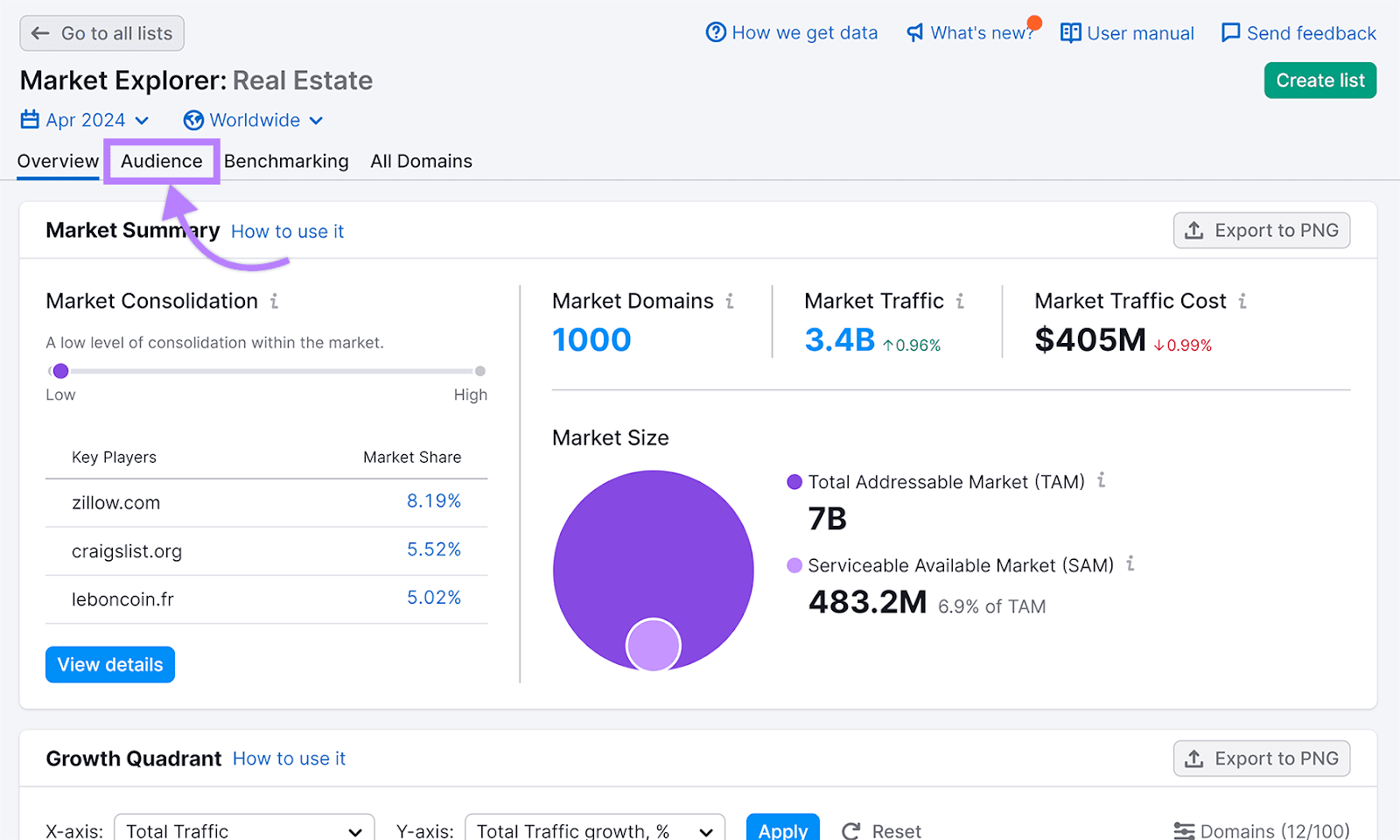
Here, you’ll see the audience summary at the top. Scroll down to reach the “Social Media” widget. To find your audience’s preferred social platforms.

Once you figure out which channels to use, create a social media content strategy for each platform.
Then, start creating and distributing content that resonates with your audience. And use techniques like incorporating trending hashtags and using relevant keywords to increase your visibility.
Further reading: Social Media SEO: How to Rank Higher on Social Media & Google
Navigate Digital Marketing Trends with Semrush
It can be tough to keep up with digital marketing industry trends.
Simplify things by prioritizing trends that align with your business goals. And audience preferences.
That’s where Semrush comes in.
Our suite of tools helps you stay on top of your digital marketing game. By providing the insights you need to identify trends and develop winning strategies.
Get your free trial now.

